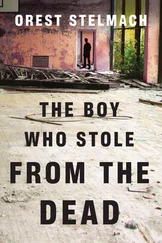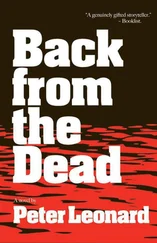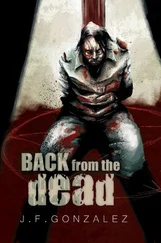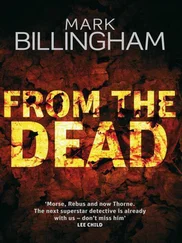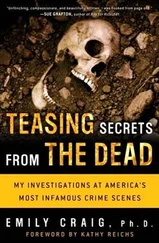Gerlof carefully filed a small groove in the top of a mast as he waited for a reply from the retired gravedigger. Axelsson was bent over a table covered with thousands of jigsaw pieces. He was halfway through a huge picture of Monet’s water lilies.
He fitted a piece into the black lily pond, then looked up.
“Kant?” he said.
“Nils Kant, yes,” said Gerlof. “The grave is still a bit isolated, over by the west wall. And that made me think about his funeral. I wasn’t living up here at the time...”
Axelsson nodded, picked up a piece of the jigsaw, and pondered. “Yes, I dug the grave and carried the coffin, along with my colleagues from the churchyard... Nobody rushed to volunteer as a bearer for that particular duty.”
“Weren’t there any mourners?”
“His mother was there. She was there all the time. I’d hardly ever seen her before, but she was all skin and bone, dressed in a coal-black coat,” said Axelsson. “But as for calling her a mourner — well, I don’t know about that. She looked a bit too pleased to me.”
“Pleased?”
“Yes... Of course, I didn’t see her inside the church,” said Axelsson. “But I remember glancing at her when we were lowering the coffin into the ground. Vera was standing near the grave, watching the coffin disappear, and I could see that she was smiling beneath her veil. As if she was really pleased with the funeral.”
Gerlof nodded. “And she was the only one at the burial? Nobody else?”
Axelsson shook his head. “There were several people there, but you’d hardly call them mourners. The police were there too, but they were standing further away, almost by the church door.”
“They probably wanted to see that Kant went into the ground, once and for all,” said Gerlof.
“True.” Axelsson nodded. “And that’s everybody who was there, I think, except for Pastor Fridlund.”
“At least he was getting paid.”
Gerlof polished away at the ship’s little hull for a few minutes. Then he took a deep breath and said:
“What you said about Vera Kant smiling at the graveside, it does make you wonder about what was in the coffin...”
Axelsson looked down at his puzzle and picked up another piece.
“Are you going to ask me if it felt strangely light when we were carrying it, Gerlof?” he said. “I’ve been asked that question several times over the years.”
“Well, people do talk about it sometimes... the fact that Kant’s coffin might have been empty. You’ve heard that too, surely?”
“You can stop wondering, because it wasn’t,” said Axelsson. “There were four of us carrying it, both before and after the service, and we definitely needed that many. It was bloody heavy.”
Gerlof felt as if he were questioning the old gravedigger’s integrity, but he had to persist:
“Some people say there might have been just stones in the coffin, or sandbags,” he said quietly.
“I’ve heard that rumor,” replied Axelsson. “I didn’t look inside myself, but somebody must have... when it arrived here on the ferry.”
“I’ve heard that nobody opened it,” said Gerlof. “It was sealed, and nobody had the nerve or the authority to break it open. Do you know if anybody opened it?”
“No...” said Axelsson. “I just remember vaguely that there was some kind of death certificate from South America that came with the coffin on one of Malm’s cargo ships. Somebody down at the truck depot in Borgholm who knew a bit of Spanish had read it... Nils Kant had drowned, it said, and he’d been in the water for a long time before they pulled him out. So I imagine the body didn’t look too good.”
“Perhaps people were afraid Vera Kant would start making trouble,” said Gerlof. “I suppose they just wanted to bury Kant and move on.”
Axelsson looked at Gerlof, then shrugged his shoulders.
“Don’t ask me,” he said, placing another piece of a water lily in the pond on Monet’s painting. “I just put him in the ground; I did my job and I went home.”
“I know that, Torsten.”
Axelsson placed another piece in the jigsaw, looked at the result for a while and then at the clock on the wall. He got up slowly.
“Coffee time,” he said. But before he left the room, he stopped and turned his head.
“What do you think, Gerlof?” he said. “Is Nils Kant lying in his coffin?”
“I’m sure he is,” answered Gerlof quietly, without looking at the old gravedigger.
By the time Gerlof had returned to his room, it was already after seven and there was only half an hour left until coffee time. Routine, everything followed a routine at the senior citizens’ home.
But the conversation with Torsten Axelsson in the cellar had been useful, thought Gerlof. Useful. Perhaps he might have been a bit too talkative and insistent toward the end, attracting quizzical looks from Axelsson as a result.
No doubt the gossip had already started in the corridors of the home about Gerlof’s remarkable interest in Nils Kant. It might even spread outside the walls of the home, but so be it. That was what he wanted, wasn’t it: to stir the ants’ nest and maybe make things happen?
He sat down heavily on the bed and picked up that day’s copy of Ölands-Posten from the bedside table. He hadn’t had time to read the paper that morning, or rather he hadn’t had the inclination.
The death in Stenvik was the big news story on the front page, and there was one of Bengt Nyberg’s photographs of the quarry with an arrow to indicate exactly where the accident had happened.
It was an accident, according to the police in Borgholm. Ernst Adolfsson had been trying to move a stone statue at the edge of the cliff; the old man had tripped and fallen, and ended up with the huge block of stone on top of him. No crime was suspected.
Gerlof read only the beginning of Bengt Nyberg’s article, then leafed through the paper until he found news of less personal significance: a building project that was running well overtime in Långvik, a barn fire outside Löttorp, and the eighty-one-year-old suffering from senile dementia who had left his home in southern Öland a few days earlier to go for a walk, and who was still missing without a trace on the alvar. He was bound to be found, but not alive.
Gerlof folded up the paper and placed it back on the table, then caught sight of Ernst’s wallet. He’d put it aside when he got back from Stenvik. Now he picked it up, opened it, and looked at all the cash inside and an even thicker bundle of receipts. He left the money in the wallet, but he slowly went through the receipts.
Most of them related to small purchases from food stores in Marnäs or Långvik, or were handwritten receipts from Ernst’s own sales of sculpture last summer.
Gerlof was looking for later receipts, ideally from the same day the sculpture of Marnäs church tower fell on Ernst. He didn’t find any.
Almost at the bottom of the pile he found something else: a little yellow entrance ticket for a museum. Ramneby Wood Museum was printed on the ticket, along with a little drawing of planks of wood in a stack, and a date stamp in black ink: Sept. 13.
He left the ticket on the bedside table. He fastened the rest of the receipts together with a paper clip and pushed them into the desk drawer. Then he sat down at the desk, reached for his notebook, and opened it at the first clean page. He picked up a pencil, thought for a little while, then made two notes:
VERA KANT WAS SMILING WHEN NILS’s COFFIN WAS BURIED.
And:
ERNST VISITED THE KANT FAMILY’S SAWMILL IN RAMNEBY.
Then he placed the museum ticket in the book, closed it, and settled down to wait for his coffee. Routine, everything was just routine when you got old.
Читать дальше


